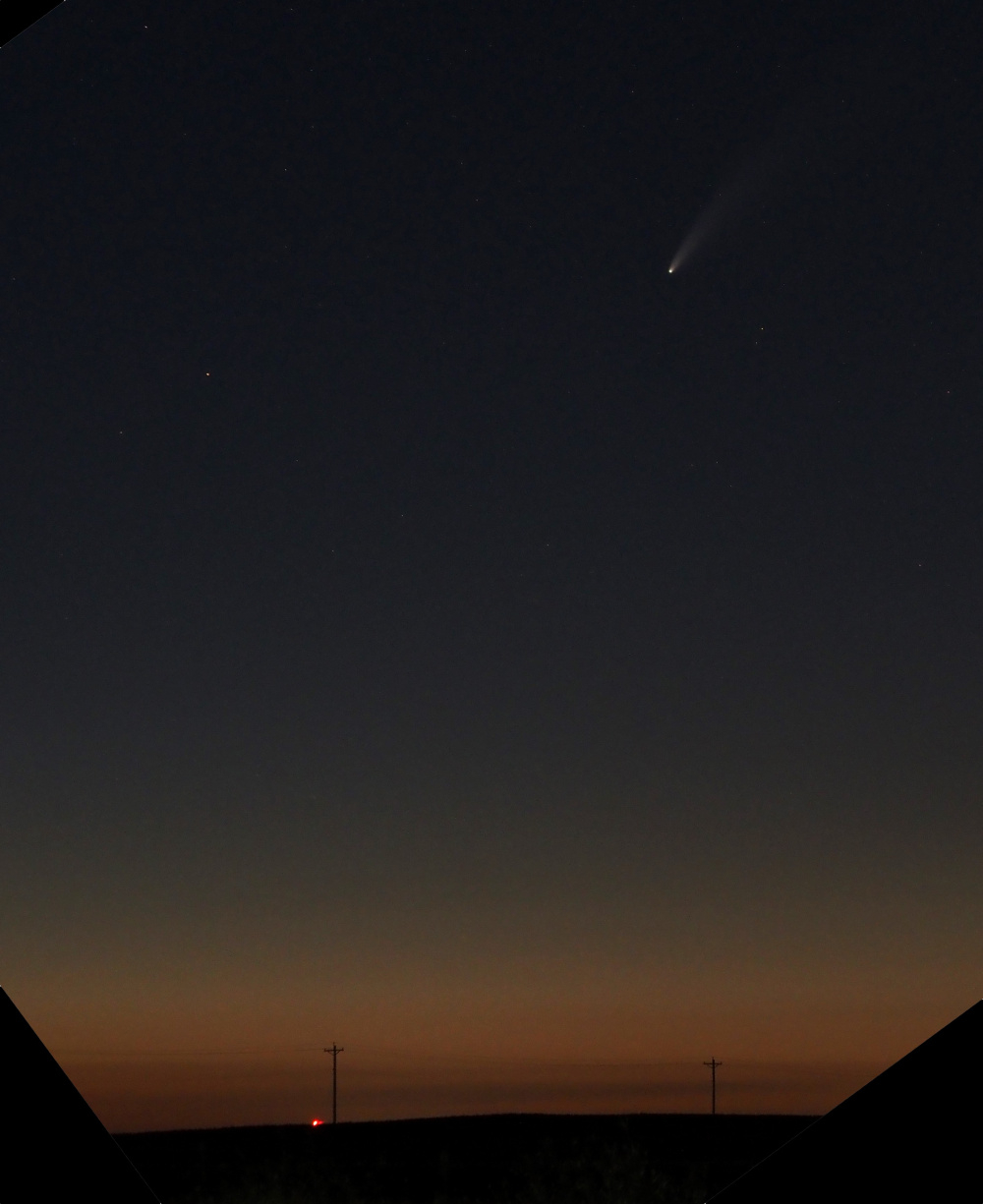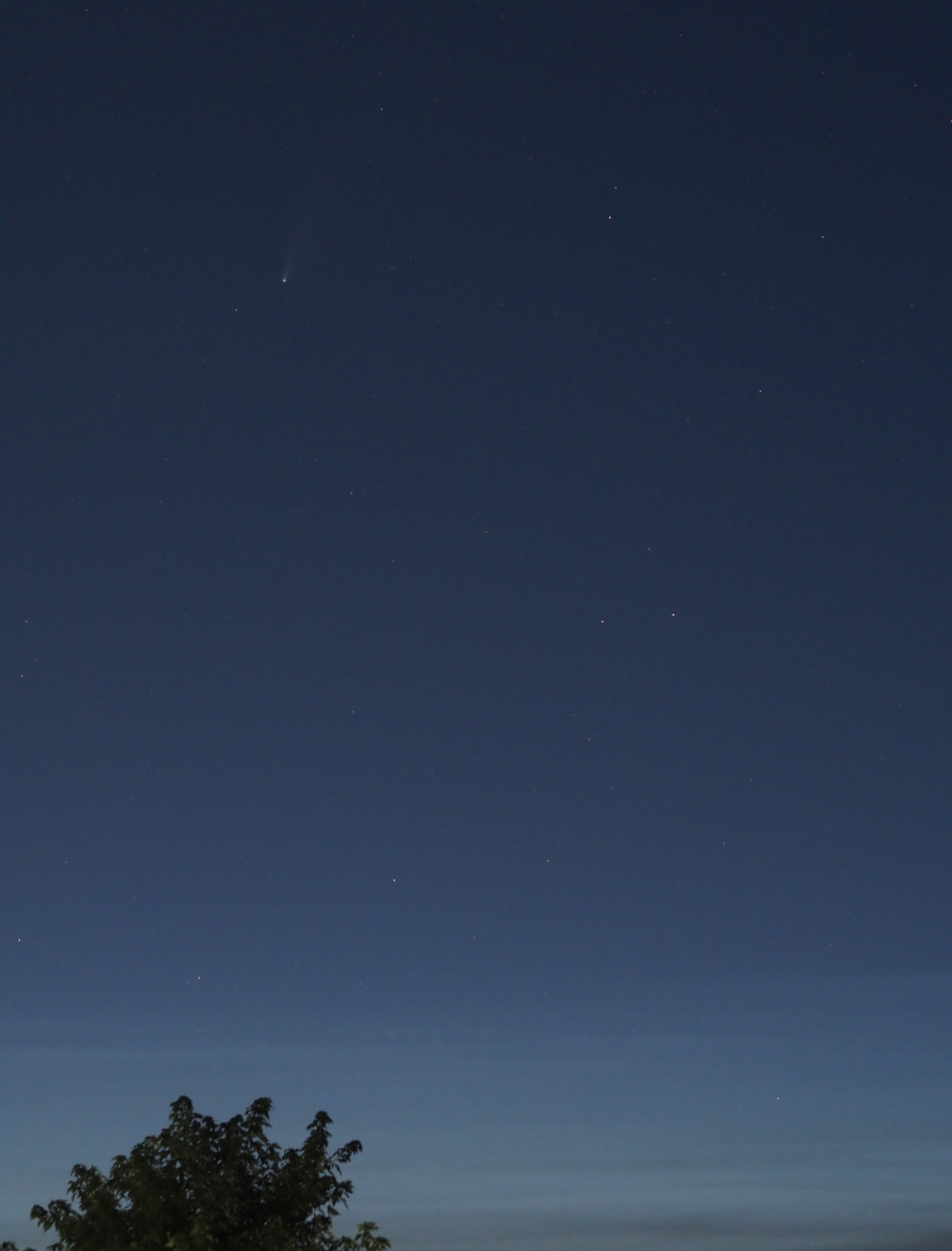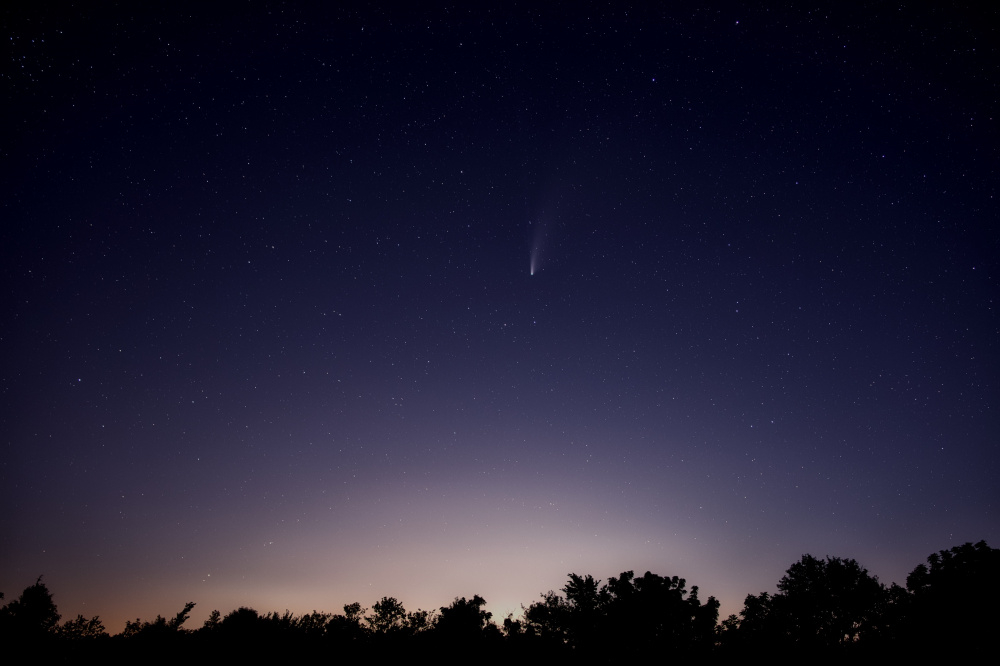Home ›
Site Links
Howdy, Stranger!
It looks like you're new here. If you want to get involved, click one of these buttons!
Quick Links
Categories
Who's Online (0)
OT - Comet NEOWISE and 2020 summer astrophotography
Today (7/23/2020) marks the closest approach to earth for Comet NEOWISE. In my experience it seems to be dimming a bit though, but I could still easily make it out without binoculars from a dark location. I know we have some photographers here and a few astro buffs. I thought I might throw this up to see if anyone has captured anything.
https://nasa.gov/feature/how-to-see-comet-neowise
My luck hasn't been great compared to some I've seen, and NEOWISE doesn't rival Hale-Bopp, but it's still on of the best comets I've seen.
I got this shot from a rural location outside Ankeny on 7/15.

I got this from my Ankeny driveway on Monday (7/20).






Comments
It's been cloudy here in minneapolis, and it is still cloudy today...!
I could only see it on Sunday. Will try for the next few days, but evening are going to cloudy, monday might be a bit clear, and rainy and cloudy after that...
the early mornings were clear, but i couldn't spot it from my backyard - too many houses and tall trees around...
I saw it a few nights ago from in town. Light pollution obscured the tail, but the head was still visible without binoculars.
Before dawn, NE sky, about +13* from the horizon. I haven't seen it yet either.
InDIYana Event Website
You've got a dob? What size? I'd love to get boys small refractor out but the flying vampires would drain us in under a minute.
It's been so dry here the little suckers are not as prevalent.
InDIYana Event Website
It has been too close to the sun too see at dawn for over a week. This week you can see it just below and left of the bottom of the Big Dipper. On clear nights between 10 and 11 PM is your best bet. You may need binoculars to locate it the first time, but in a dark location, once you know where it is your eyes can pick it up.
This was taken as the crescent moon set at around 10 PM on Wednesday in Northern IA.

I tried yesterday night - it was too faint to see with naked eyes, with 8x10 binoculars i could hardly make out a fuzzy spot. this is in the city, so dark spots will have better viewing, but last weekend, it was much brighter
what are you using for photographing? and are they long(ish) exposure shots? they look like wide angle, but you do seem to get good definition of the comet
I have pretty cool app called Sky Guide on my phone. It shows where it's at, but had been to cloudy for me to see it lately. 😒 Nice seeing Saturn and Jupiter next to each other.
I got solarium, works pretty well, sometimes the compass goes bonkers and then I am waving my phone crazily in the night....!
Ha! Yeah, same here
if it is clear, go wide angle below the great bear, you might be able to catch it in frame.
This shot is with a Canon EOS 6D, and Tamron 35mm f1.8. settings are 10 seconds at f/2.8, ISO 2500. I have an image stack of this shot that f a i n t l y shows the ion tail. Still working on the shots from that session.
Wednesday night while we were observing the comet, here's what was over my right shoulder. Also worth noting if you are out in the dark countryside, late July has an overlap of a few widely dispersed meteor showers, so with your eyes to the sky your chances of catching a random fireball are decent. Of course when we get to August 11-12 the fireworks really pick up with the Perseids.
After the setting of the crescent moon in the shot above I took a sequence of 11 shots and this is the resulting stack. On my monitor I can see the ion tail. I wish I were a post-processing wizard so I could tease it out a little better.

After looking out among the stars do you ever get the feeling you are flying and looking down onto the heavens?
Unless it is a good sized Dob with a nagler, any mainstream telescope or bird watching binoculars feels like looking down a tube, fatiguing and difficult to focus on details. Handheld binoculars keeps jumping around. Good sized dobs means you need a step ladder to observe, but there are usually a couple at any good sized star party....
Do you have any with higher focal length lens?
The first pic in the thread is with a 90mm (full frame equivalent) on an Olympus m4/3 body. That combo in portrait orientation allowed including the horizon for context and gave me some decent shots.
I tried a 24-135mm zoom on 2 different Canon bodies and found I couldn't get enough light captured and it was impossible to focus for me in the field. Then I tried a faster 100mm f/2.8 L, which is 160mm on an APS-C body. I still had underwhelming results even with stacking. Some of the most striking images I've seen are from longer lenses, but they must be utilizing tracking, either with a scope or $1000's worth of ED glass.
This was the best result of stacking with the 100mm on an APS-C body. Considering the stellar conditions while I was out, the outcome was not that inspiring to me. Again, my post-processing skills are weak, so...
This is the only acceptable one I got from the city (minneapolis), trip outside the city were ruined due to clouds appearing. This was the first i saw after trying multiple dawns and then morning. I could see only another day from my driveway last week, but that was even more faint. will try outside city next couple of days, if lucky...
300mm, m43, f2.8 3.34 second exposure, isp 1600, single exposure
what site/spot do you visit for the dark skies? Trying to find some place where i can drive to. park and setup and hang around for a few hours....
https://darksitefinder.com/maps/world.html#7/43.289/-92.769
If you can get to the dark green or the blue you are in some pretty nice skies on a clear night. That's not a short trip from the Twin Cities. Even from Des Moines it's a long hour one way. I grew up in a blue/green area NE of Omaha. County and state parks and even country churches north and west of Des Moines often make good stops and provide some interesting foreground subjects.
yes, long drives from the twin cities!!!
The Mrs. and I got out to see the Perseids late Tuesday. Viewing conditions were excellent considering we were still within 19 miles of Downtown Des Moines. The cameras didn't catch as many as we did visually, but here are a couple.
I'm seeing a few of these fainter meteors as I scroll through the individual images. I believe these shallower ones are not uncommon early in the night because they are striking the atmosphere above us at a glancing blow. 3 AM to 4 AM is supposed to be the golden hour since the angle of impact is more dead on. Also noteworthy is how easy it was to see Andromeda with the naked eye. This is cropped from a larger image.
That's a good shot...
Thanks Ani.
Now the star trails from the same session. Polaris on the upper left, crossing the ecliptic to Jupiter on the lower right.
Different angle, mostly northern sky
some nice shots there!